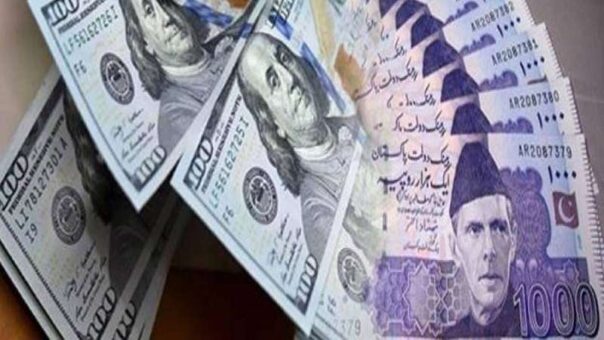Karachi, March 5, 2024 – The Pakistani Rupee experienced a mild depreciation against the US dollar, settling at PKR 279.31 in the interbank foreign exchange market on Tuesday.
This marks a decrease of PKR 0.05 compared to the previous day’s closing rate of PKR 279.26.
Currency market analysts attribute this decline to an increased demand for the US Dollar, primarily driven by import requirements and corporate payments. The surge in demand has placed pressure on the local currency, exacerbating its downward trend. Additionally, a reduction in foreign exchange reserves has further contributed to the depreciation of the Pakistani Rupee against the greenback.
As of the week ending February 23, 2024, Pakistan’s total exchange reserves stood at $13.039 billion, reflecting a decrease from the previous week’s $13.098 billion (February 16, 2024). The diminishing reserves have raised concerns among economic analysts, who view this as a significant factor influencing the weakening of the rupee.
While the decline in reserves and the subsequent depreciation are noteworthy, it’s important to put these figures into perspective. Despite the decrease, the current reserves remain higher than those observed in August 2021, a period marked by economic challenges for Pakistan.
August 2021 witnessed a widening current account deficit, inflationary pressures, and global uncertainty due to the COVID-19 pandemic. During that time, Pakistan was engaged in negotiations with the International Monetary Fund (IMF) to secure a bailout package and ensure financial stability.
Comparing the current economic situation to that of August 2021 underscores the resilience of Pakistan’s economy in the face of evolving circumstances. While challenges persist, the nation has made progress in addressing economic vulnerabilities and establishing a more stable financial environment.
Market observers emphasize the need for close monitoring and management of the balance between imports and exports, coupled with prudent fiscal policies, to mitigate the impact of external factors on the exchange rate. Policymakers are expected to focus on bolstering foreign exchange reserves to enhance the country’s capacity to withstand economic shocks.
The interventions and monetary policy decisions of the Central Bank are likely to play a crucial role in stabilizing the currency and addressing concerns related to foreign exchange reserves. Past resilience, combined with proactive measures, could contribute to restoring confidence in the economy and maintaining a stable currency in the months ahead. Investors and stakeholders are advised to stay vigilant and informed as the economic landscape continues to evolve.
